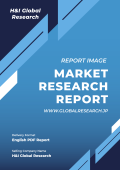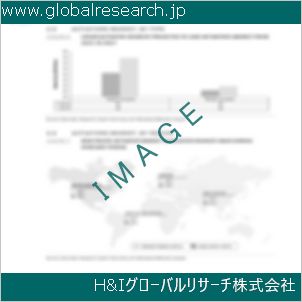1 Acrylic Insulation Agent Market Overview
1.1 Product Definition
1.2 Acrylic Insulation Agent Segment by Type
1.2.1 Global Acrylic Insulation Agent Market Value Growth Rate Analysis by Type 2022 VS 2029
1.2.2 Acrylic Insulating Paint
1.2.3 Acrylic Insulating Glue
1.2.4 Acrylic Insulating Powder
1.3 Acrylic Insulation Agent Segment by Application
1.3.1 Global Acrylic Insulation Agent Market Value Growth Rate Analysis by Application: 2022 VS 2029
1.3.2 Military
1.3.3 Residential
1.3.4 Industrial
1.3.5 Others
1.4 Global Market Growth Prospects
1.4.1 Global Acrylic Insulation Agent Production Value Estimates and Forecasts (2018-2029)
1.4.2 Global Acrylic Insulation Agent Production Capacity Estimates and Forecasts (2018-2029)
1.4.3 Global Acrylic Insulation Agent Production Estimates and Forecasts (2018-2029)
1.4.4 Global Acrylic Insulation Agent Market Average Price Estimates and Forecasts (2018-2029)
1.5 Assumptions and Limitations
2 Market Competition by Manufacturers
2.1 Global Acrylic Insulation Agent Production Market Share by Manufacturers (2018-2023)
2.2 Global Acrylic Insulation Agent Production Value Market Share by Manufacturers (2018-2023)
2.3 Global Key Players of Acrylic Insulation Agent, Industry Ranking, 2021 VS 2022 VS 2023
2.4 Global Acrylic Insulation Agent Market Share by Company Type (Tier 1, Tier 2 and Tier 3)
2.5 Global Acrylic Insulation Agent Average Price by Manufacturers (2018-2023)
2.6 Global Key Manufacturers of Acrylic Insulation Agent, Manufacturing Base Distribution and Headquarters
2.7 Global Key Manufacturers of Acrylic Insulation Agent, Product Offered and Application
2.8 Global Key Manufacturers of Acrylic Insulation Agent, Date of Enter into This Industry
2.9 Acrylic Insulation Agent Market Competitive Situation and Trends
2.9.1 Acrylic Insulation Agent Market Concentration Rate
2.9.2 Global 5 and 10 Largest Acrylic Insulation Agent Players Market Share by Revenue
2.10 Mergers & Acquisitions, Expansion
3 Acrylic Insulation Agent Production by Region
3.1 Global Acrylic Insulation Agent Production Value Estimates and Forecasts by Region: 2018 VS 2022 VS 2029
3.2 Global Acrylic Insulation Agent Production Value by Region (2018-2029)
3.2.1 Global Acrylic Insulation Agent Production Value Market Share by Region (2018-2023)
3.2.2 Global Forecasted Production Value of Acrylic Insulation Agent by Region (2024-2029)
3.3 Global Acrylic Insulation Agent Production Estimates and Forecasts by Region: 2018 VS 2022 VS 2029
3.4 Global Acrylic Insulation Agent Production by Region (2018-2029)
3.4.1 Global Acrylic Insulation Agent Production Market Share by Region (2018-2023)
3.4.2 Global Forecasted Production of Acrylic Insulation Agent by Region (2024-2029)
3.5 Global Acrylic Insulation Agent Market Price Analysis by Region (2018-2023)
3.6 Global Acrylic Insulation Agent Production and Value, Year-over-Year Growth
3.6.1 North America Acrylic Insulation Agent Production Value Estimates and Forecasts (2018-2029)
3.6.2 Europe Acrylic Insulation Agent Production Value Estimates and Forecasts (2018-2029)
3.6.3 China Acrylic Insulation Agent Production Value Estimates and Forecasts (2018-2029)
3.6.4 Japan Acrylic Insulation Agent Production Value Estimates and Forecasts (2018-2029)
4 Acrylic Insulation Agent Consumption by Region
4.1 Global Acrylic Insulation Agent Consumption Estimates and Forecasts by Region: 2018 VS 2022 VS 2029
4.2 Global Acrylic Insulation Agent Consumption by Region (2018-2029)
4.2.1 Global Acrylic Insulation Agent Consumption by Region (2018-2023)
4.2.2 Global Acrylic Insulation Agent Forecasted Consumption by Region (2024-2029)
4.3 North America
4.3.1 North America Acrylic Insulation Agent Consumption Growth Rate by Country: 2018 VS 2022 VS 2029
4.3.2 North America Acrylic Insulation Agent Consumption by Country (2018-2029)
4.3.3 United States
4.3.4 Canada
4.4 Europe
4.4.1 Europe Acrylic Insulation Agent Consumption Growth Rate by Country: 2018 VS 2022 VS 2029
4.4.2 Europe Acrylic Insulation Agent Consumption by Country (2018-2029)
4.4.3 Germany
4.4.4 France
4.4.5 U.K.
4.4.6 Italy
4.4.7 Russia
4.5 Asia Pacific
4.5.1 Asia Pacific Acrylic Insulation Agent Consumption Growth Rate by Region: 2018 VS 2022 VS 2029
4.5.2 Asia Pacific Acrylic Insulation Agent Consumption by Region (2018-2029)
4.5.3 China
4.5.4 Japan
4.5.5 South Korea
4.5.6 China Taiwan
4.5.7 Southeast Asia
4.5.8 India
4.6 Latin America, Middle East & Africa
4.6.1 Latin America, Middle East & Africa Acrylic Insulation Agent Consumption Growth Rate by Country: 2018 VS 2022 VS 2029
4.6.2 Latin America, Middle East & Africa Acrylic Insulation Agent Consumption by Country (2018-2029)
4.6.3 Mexico
4.6.4 Brazil
4.6.5 Turkey
4.6.6 GCC Countries
5 Segment by Type
5.1 Global Acrylic Insulation Agent Production by Type (2018-2029)
5.1.1 Global Acrylic Insulation Agent Production by Type (2018-2023)
5.1.2 Global Acrylic Insulation Agent Production by Type (2024-2029)
5.1.3 Global Acrylic Insulation Agent Production Market Share by Type (2018-2029)
5.2 Global Acrylic Insulation Agent Production Value by Type (2018-2029)
5.2.1 Global Acrylic Insulation Agent Production Value by Type (2018-2023)
5.2.2 Global Acrylic Insulation Agent Production Value by Type (2024-2029)
5.2.3 Global Acrylic Insulation Agent Production Value Market Share by Type (2018-2029)
5.3 Global Acrylic Insulation Agent Price by Type (2018-2029)
6 Segment by Application
6.1 Global Acrylic Insulation Agent Production by Application (2018-2029)
6.1.1 Global Acrylic Insulation Agent Production by Application (2018-2023)
6.1.2 Global Acrylic Insulation Agent Production by Application (2024-2029)
6.1.3 Global Acrylic Insulation Agent Production Market Share by Application (2018-2029)
6.2 Global Acrylic Insulation Agent Production Value by Application (2018-2029)
6.2.1 Global Acrylic Insulation Agent Production Value by Application (2018-2023)
6.2.2 Global Acrylic Insulation Agent Production Value by Application (2024-2029)
6.2.3 Global Acrylic Insulation Agent Production Value Market Share by Application (2018-2029)
6.3 Global Acrylic Insulation Agent Price by Application (2018-2029)
7 Key Companies Profiled
7.1 Young IL
7.1.1 Young IL Acrylic Insulation Agent Corporation Information
7.1.2 Young IL Acrylic Insulation Agent Product Portfolio
7.1.3 Young IL Acrylic Insulation Agent Production, Value, Price and Gross Margin (2018-2023)
7.1.4 Young IL Main Business and Markets Served
7.1.5 Young IL Recent Developments/Updates
7.2 NAMBANG CNA
7.2.1 NAMBANG CNA Acrylic Insulation Agent Corporation Information
7.2.2 NAMBANG CNA Acrylic Insulation Agent Product Portfolio
7.2.3 NAMBANG CNA Acrylic Insulation Agent Production, Value, Price and Gross Margin (2018-2023)
7.2.4 NAMBANG CNA Main Business and Markets Served
7.2.5 NAMBANG CNA Recent Developments/Updates
7.3 Lakma Group
7.3.1 Lakma Group Acrylic Insulation Agent Corporation Information
7.3.2 Lakma Group Acrylic Insulation Agent Product Portfolio
7.3.3 Lakma Group Acrylic Insulation Agent Production, Value, Price and Gross Margin (2018-2023)
7.3.4 Lakma Group Main Business and Markets Served
7.3.5 Lakma Group Recent Developments/Updates
7.4 Japan Aerospace eXploration Agency (JAXA)
7.4.1 Japan Aerospace eXploration Agency (JAXA) Acrylic Insulation Agent Corporation Information
7.4.2 Japan Aerospace eXploration Agency (JAXA) Acrylic Insulation Agent Product Portfolio
7.4.3 Japan Aerospace eXploration Agency (JAXA) Acrylic Insulation Agent Production, Value, Price and Gross Margin (2018-2023)
7.4.4 Japan Aerospace eXploration Agency (JAXA) Main Business and Markets Served
7.4.5 Japan Aerospace eXploration Agency (JAXA) Recent Developments/Updates
7.5 Jiangsu Bangjie Anti-Corrosion Insulation Technology
7.5.1 Jiangsu Bangjie Anti-Corrosion Insulation Technology Acrylic Insulation Agent Corporation Information
7.5.2 Jiangsu Bangjie Anti-Corrosion Insulation Technology Acrylic Insulation Agent Product Portfolio
7.5.3 Jiangsu Bangjie Anti-Corrosion Insulation Technology Acrylic Insulation Agent Production, Value, Price and Gross Margin (2018-2023)
7.5.4 Jiangsu Bangjie Anti-Corrosion Insulation Technology Main Business and Markets Served
7.5.5 Jiangsu Bangjie Anti-Corrosion Insulation Technology Recent Developments/Updates
7.6 PPG Paints
7.6.1 PPG Paints Acrylic Insulation Agent Corporation Information
7.6.2 PPG Paints Acrylic Insulation Agent Product Portfolio
7.6.3 PPG Paints Acrylic Insulation Agent Production, Value, Price and Gross Margin (2018-2023)
7.6.4 PPG Paints Main Business and Markets Served
7.6.5 PPG Paints Recent Developments/Updates
7.7 Sherwin-Williams
7.7.1 Sherwin-Williams Acrylic Insulation Agent Corporation Information
7.7.2 Sherwin-Williams Acrylic Insulation Agent Product Portfolio
7.7.3 Sherwin-Williams Acrylic Insulation Agent Production, Value, Price and Gross Margin (2018-2023)
7.7.4 Sherwin-Williams Main Business and Markets Served
7.7.5 Sherwin-Williams Recent Developments/Updates
7.8 Truco, Inc
7.8.1 Truco, Inc Acrylic Insulation Agent Corporation Information
7.8.2 Truco, Inc Acrylic Insulation Agent Product Portfolio
7.8.3 Truco, Inc Acrylic Insulation Agent Production, Value, Price and Gross Margin (2018-2023)
7.8.4 Truco, Inc Main Business and Markets Served
7.7.5 Truco, Inc Recent Developments/Updates
7.9 Dulux
7.9.1 Dulux Acrylic Insulation Agent Corporation Information
7.9.2 Dulux Acrylic Insulation Agent Product Portfolio
7.9.3 Dulux Acrylic Insulation Agent Production, Value, Price and Gross Margin (2018-2023)
7.9.4 Dulux Main Business and Markets Served
7.9.5 Dulux Recent Developments/Updates
7.10 The Dow Chemical Company
7.10.1 The Dow Chemical Company Acrylic Insulation Agent Corporation Information
7.10.2 The Dow Chemical Company Acrylic Insulation Agent Product Portfolio
7.10.3 The Dow Chemical Company Acrylic Insulation Agent Production, Value, Price and Gross Margin (2018-2023)
7.10.4 The Dow Chemical Company Main Business and Markets Served
7.10.5 The Dow Chemical Company Recent Developments/Updates
7.11 Hempel
7.11.1 Hempel Acrylic Insulation Agent Corporation Information
7.11.2 Hempel Acrylic Insulation Agent Product Portfolio
7.11.3 Hempel Acrylic Insulation Agent Production, Value, Price and Gross Margin (2018-2023)
7.11.4 Hempel Main Business and Markets Served
7.11.5 Hempel Recent Developments/Updates
7.12 Walter Wurdack, Inc.
7.12.1 Walter Wurdack, Inc. Acrylic Insulation Agent Corporation Information
7.12.2 Walter Wurdack, Inc. Acrylic Insulation Agent Product Portfolio
7.12.3 Walter Wurdack, Inc. Acrylic Insulation Agent Production, Value, Price and Gross Margin (2018-2023)
7.12.4 Walter Wurdack, Inc. Main Business and Markets Served
7.12.5 Walter Wurdack, Inc. Recent Developments/Updates
7.13 ITW
7.13.1 ITW Acrylic Insulation Agent Corporation Information
7.13.2 ITW Acrylic Insulation Agent Product Portfolio
7.13.3 ITW Acrylic Insulation Agent Production, Value, Price and Gross Margin (2018-2023)
7.13.4 ITW Main Business and Markets Served
7.13.5 ITW Recent Developments/Updates
8 Industry Chain and Sales Channels Analysis
8.1 Acrylic Insulation Agent Industry Chain Analysis
8.2 Acrylic Insulation Agent Key Raw Materials
8.2.1 Key Raw Materials
8.2.2 Raw Materials Key Suppliers
8.3 Acrylic Insulation Agent Production Mode & Process
8.4 Acrylic Insulation Agent Sales and Marketing
8.4.1 Acrylic Insulation Agent Sales Channels
8.4.2 Acrylic Insulation Agent Distributors
8.5 Acrylic Insulation Agent Customers
9 Acrylic Insulation Agent Market Dynamics
9.1 Acrylic Insulation Agent Industry Trends
9.2 Acrylic Insulation Agent Market Drivers
9.3 Acrylic Insulation Agent Market Challenges
9.4 Acrylic Insulation Agent Market Restraints
10 Research Finding and Conclusion
11 Methodology and Data Source
11.1 Methodology/Research Approach
11.1.1 Research Programs/Design
11.1.2 Market Size Estimation
11.1.3 Market Breakdown and Data Triangulation
11.2 Data Source
11.2.1 Secondary Sources
11.2.2 Primary Sources
11.3 Author List
11.4 Disclaimer
| ※参考情報 アクリル絶縁剤は、主に電気的な絶縁、保護、及びその他の特性を付与するために用いられる化合物の一つです。アクリル素材は、優れた化学的安定性や機械的特性があり、多くの工業分野で幅広い用途があります。本稿では、アクリル絶縁剤の定義、特徴、種類、用途、関連技術などについて詳しく述べていきます。 まず、アクリル絶縁剤の定義について説明します。アクリル絶縁剤は、通常はアクリル樹脂を基にした材料で、電気的な絶縁性を有し、さまざまな電子機器や電気部品の保護を目的としています。具体的には、アクリル酸エステルを主成分としており、ポリマー化を通じて硬化し、堅牢な絶縁層を形成します。この特性により、アクリル絶縁剤は、さまざまな電気回路や機器に広く利用されています。 次に、アクリル絶縁剤の特徴について考察します。アクリル絶縁剤は、まずその優れた絶縁特性があります。この特性により、電気機器が過熱やショートするリスクを軽減します。また、耐候性や耐薬品性にも優れており、特に外気にさらされる環境での使用にも適しています。さらに、アクリル絶縁剤は透明性があるため、見た目を損なうことなく保護機能を果たすことができます。この透明性は、光学機器やディスプレイ周辺機器などにおいて特に重要です。 アクリル絶縁剤にはいくつかの種類が存在し、用途に応じて選択されます。一般的な種類には、アクリル系塗料、アクリル系シーラント、アクリル系接着剤などがあります。アクリル系塗料は、電子部品の表面を保護するための塗膜を形成し、耐腐食性を向上させます。アクリル系シーラントは、接合部分や隙間を埋め、外部からの水分や異物の侵入を防ぐ役割を果たします。アクリル系接着剤は、他の材料と接着する際に使用され、強力な接着力を持ちながら透明性を保つことができます。 アクリル絶縁剤の用途は非常に幅広く、多岐にわたります。具体的には、電子機器の製造、電気回路基板の保護、自動車産業、航空宇宙産業、医療機器などで利用されています。電子機器においては、プリント基板のコーティングやハードウェア保護のために使用されます。このような用途では、アクリル絶縁剤は機器の寿命を延ばし、性能を向上させる重要な役割を果たします。自動車産業においては、エンジンコンパートメントや電動機器の防水対策としても利用され、特に高温や湿気の多い環境下での耐久性が求められます。 さらに、アクリル絶縁剤はその特性から、関連技術とも非常に密接に関連しています。例えば、絶縁材料の改良にはナノテクノロジーが利用され、アクリル絶縁剤にナノ粒子を添加することにより、絶縁特性や機械的強度を向上させる研究も進められています。また、3Dプリンティング技術を活用して、特定の形状や機能を持つアクリル絶縁体の製造が可能になっており、これにより新しい設計自由度が生まれています。 アクリル絶縁剤の製造プロセスには、ポリマー化反応が関わります。エチルアクリレートやメチルアクリレートなどのアクリル酸エステルを主要原料として、重合反応を促進するために触媒や添加剤が使用されます。このプロセスによって得られるポリマーは、広範な物性を有し、その後の使用目的や要求される特性に応じて調整されます。 アクリル絶縁剤を選定する際には、多くの要素を考慮する必要があります。具体的には、耐熱性、耐水性、化学的安定性、機械的強度、及び電気的特性などが挙げられます。これらの要素に基づき、適切な製品を選ぶことが重要です。また、環境への配慮も近年では重視されており、環境に優しい製品の開発も進んでいます。環境規制を遵守するために、揮発性有機化合物(VOCs)の低減やリサイクル可能な材料の使用が求められることが増えています。 さらに、アクリル絶縁剤は特定の業界基準に準拠する必要があります。各国で設定された安全基準や性能基準に基づいて製品を認証するプロセスがあり、これにより市場での信頼性が確保されます。例えば、UL規格やIEC規格などは、絶縁材料としての性能を評価するための指標となっています。 最後に、アクリル絶縁剤は高度な技術革新が進む分野でもあります。持続可能な材料の開発や新たな製造プロセスの導入により、より高性能な絶縁剤が市場に投入されることが期待されています。また、デジタルエレクトロニクスの進化に伴い、新たな材料のニーズも増加しているため、アクリル絶縁剤に対する需要は今後も持続的に高まると予想されます。 アクリル絶縁剤は、電気的な絶縁性を確保しつつ、優れた耐候性や耐薬品性を持つ材料であり、現代の多様な産業において重要な役割を果たしています。機能性の向上や環境への配慮が求められる中で、今後もその進化が期待される分野と言えるでしょう。 |
❖ 免責事項 ❖
http://www.globalresearch.jp/disclaimer












